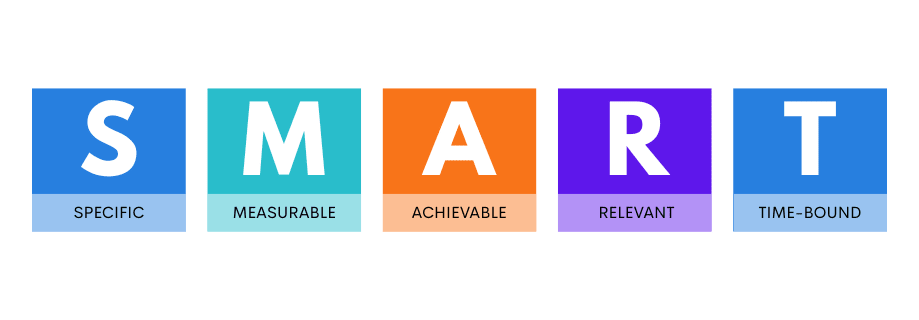Thought Leadership Strategy is a powerful tool to boost brand visibility, position themselves as industry authorities and influence the industry by sharing their expertise and insightful opinions. Developing a 360-degree strategy plan requires commitment, authenticity, credibility, research skills, and a keen understanding of the target audiences. The perfect strategic plan will help the brands to grow the business, Increase their credibility, and make the brands position themselves in the competitive market.
Here’s the breakdown of the Steps in creating the Thought Leadership Strategy-
- Understand Niche and the Audience-
The first foundation is to draft a clear and concise strategic plan to understand who you want to reach out to and what would be your niche to bring a unique value. Identify the specific areas where you want to bring a transformation whether it could be digital transformation, Customer-Centric innovation, Healthcare transformation, or sustainable business practices. The niche you have expertise in and focus on it’s easier to connect with the target audience.
Example- Sundar Pichai, CEO of Google transitioned the company's focus to become an “AI First” by emphasizing AI and Machine Learning. During his leadership, the company introduced Google Assistant and improved core services with AI. This made Google stand ahead of the competitive landscape. This strategic approach changed Google into one of the leaders in AI.
- Maintain Human touch with a unique perspective-
To reach out to the target audience, maintain a concise and relevant tone by adding a human touch. Your Thought Leadership voice should reflect your personality. The main aim should be to present new ideas with new perspectives on industry topics that resonate with your audience. Instead of providing routine ideas, discuss data-backed insights and predictions, express personal experiences, discuss case studies, and provide relevant solutions and actionable takeaways.
Example- Ratan Tata's business approach towards the audience combines empathy with Impact. His unique strategies seen in projects like Tata Nano highlighting affordability and accessibility aim to serve unmet needs beyond affluent markets. His voice integrates real-life examples of the people and his initiatives to help.
- Choose the Right Content Medium and publish regularly-
Digitalization made the tasks easy to monitor the engagement of the target audience through various platforms or channels Such as Blogs/ Articles, Videos, Podcasts, Social Media, and Case Studies, where the individual can focus on the delivery of the best results. Consistently sharing content and sharing insights by staying updated on the current industry trends builds a reputation.
Example- Amitabh Kant, ex-CEO of NITI Aayog influenced the audience through blogs, social media, and government portals to share regular insights about the progress in digital infrastructure, innovation, and policy changes. He built a reputation as a thought leader in governance among millions of people by consistently sharing posts on platforms like Twitter, Linkedin, and other social media platforms. Therefore thought leadership content strategy is the best approach to deliver your content to the target audience
- Stay Connected With Your Community-
In Thought Leadership, building trust plays a crucial role as an Individual or as a business. Engaging with your own community evokes a sense of trust. Hosting Q&A sessions and live webinars, collaborating with other industry leaders, taking feedback and responding to the audience's comments, and participating in discussions help to build trust.
Example- Kiran Mazumdar Shaw founder of Biocon is well known for their transparency and accessible communication style. She has built a community of trust around Biocon, especially during the COVID-19 pandemic. With the help of social media, she engaged with her audience, answered their queries, and addressed health care concerns directly. Sharing valuable insights, updates, and her own experiences she built an unbreakable bond with the community and positioned herself as a trusted thought leader in healthcare.
- Stay Current and Learn Continuously-
It’s necessary to stay ahead as a Thought Leader. Staying updated with the current trends and technology developments, regularly following industry news, attending relevant conferences, and meeting with other experts in the industry ensures continuous learning and makes your insights valuable which helps to position you as a forward-thinking leader in your industry.
Example- Falguni Nayar, founder of “Nykaa” is known for staying current by following international e-commerce and beauty trends closely. Her understanding of the global retail market and her thought leadership marketing strategy and creative approach to online and offline integration made Nykaa a fashion & beauty leader in India's beauty market. Her willingness to learn new digital marketing tactics and customer engagement techniques shows her commitment to continuous improvement.
- Maintain Transparency-
One of the key strategies in Thought Leadership is maintaining a degree of transparency. Sharing both success stories and lessons learned from failures develops authenticity and allows the audience to relate to your journey. Find the opportunity to speak at events, contribute to industry panels, or write guest blogs/articles to expand your reach.
Examples- Ritesh Aggarwal founder of “OYO” went through criticism for rapid expansion and operational issues. Proactively, by openly acknowledging the company's challenges and the vision for addressing these issues transparently through media interviews, and public events where he not only spoke about success stories but also highlighted mistakes to create authenticity that built trust among the audience. This approach helped Ritesh to improve relationships with hotel partners, ensuring quality standards.
- Expand your reach with collaboration-
Expand your influence by collaborating with other thought leaders, social media influencers, and industry publications. Cross-promotion of your content through different platforms and partners for the webinars/interviews which helps to reach the broader audience while building credibility and trust.
Example- Ankur Warikoo, founder of “Nearbuy” collaborated with comedian Tanmay Bhat to discuss finance, personal growth, and entrepreneurship. By using large entertainment platform channels like YouTube Bhat created a huge follower base and by joining the forces Ankur blended education and entertainment to reach a broader audience while making complex topics accessible.
All these above people mentioned in thought leadership examples are the great thought leaders.
Read our detailed blog on “How to become a thought leader” to get a step by step guide for becoming a successful thought leader.
Thought Leadership Strategies that brought a change in industries-
- Innovative Product Design-
When we think about Innovation, the first thought that comes into our mind is Apple & Steve Jobs. He introduced products that are not only functional but also intuitive and beautifully designed. His strategic approach led to the products like iPhone and iPad which transformed many business sectors. And became a trendsetter for smartphone users. Apple products entirely changed daily lives whether it is at work, fun, or just everyday activities.
- Customer-Centric Approach-
Thought leaders need to focus on customer needs to shape the organization’s culture by delivering exceptional customer experiences. Jeff Bezos and Amazon exemplify this approach in a better way. He relentlessly focused on customers' needs which led Amazon to make a bold move to introduce Amazon Prime. His obsession with customer satisfaction rather than competitors, ease of shopping, and rapid delivery has set a new standard in the e-commerce market and forced competitors to re-evaluate their own customer service strategy.
- Adaptive Leadership Approach-
In Thought Leadership advocating for adaptability within organizations allows flexibility and swift responses to market changes. Here this approach comes into the picture in Netflix and Reed Hastings, who identified the decline of DVD rentals and the growth of streaming platforms. He used it as an opportunity and introduced Netflix to the audience which pivoted to a digital-first model helping it to become a global streaming giant. Netflix’s continuous adaptations to users' preferences have kept it relevant and beyond the competition.
- Data- Driven Decision-Making Strategy-
Google has adopted a data-driven strategy which led to better strategic decision making, from product development to marketing strategies, and allows it to innovate and respond to the market demands precisely. This strategy helped Google to improve its services making it one of the most trusted and relevant platforms globally.
- Purpose-Driven Missions-
In Thought Leadership it’s necessary to commit to a purpose beyond profit to build a good relationship with customers, employees, and other stakeholders. The founder of Amul Dr. Verghese Kurien was established to empower Indian Farmers and created a sustainable livelihood model. Amul continuously supports millions of Indian dairy Farmers by providing fair pricing, training, and resources by using its cooperative approach. This Approach helped Amul to become synonymous and inspired loyalty among customers and the farming community.
Explore on of the greatest thought leadership strategy example - Starlive and Airtel collaboration
Final Note
Ultimately, Thought Leadership is not only about sharing expertise it is also about creating a meaningful impact in society as well as in the industries. A well-crafted Thought Leadership Strategy helps the brands build credibility, drive for strong community ties, and position themselves as industry leaders. By sharing comprehensive insights and staying connected their community enables them to see the brand's authenticity and builds trust. The Editorial Institute majorly focus on Strategy Consultancy Service to enhance the strategic approach of the organisation. A Strategic Thought Leadership approach driven by transparency, continuous learning, and cross-border connections, staying connected will empower brands to influence the industry while sustaining growth and engagement.





